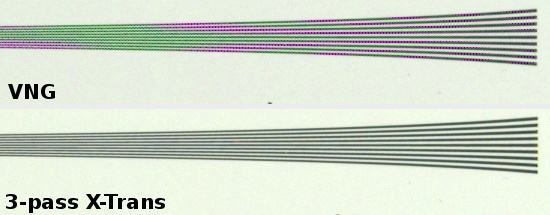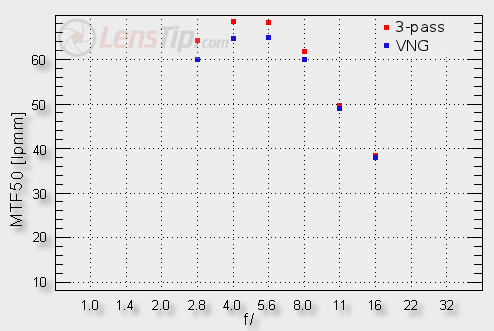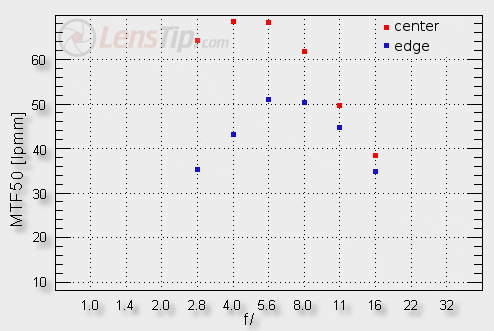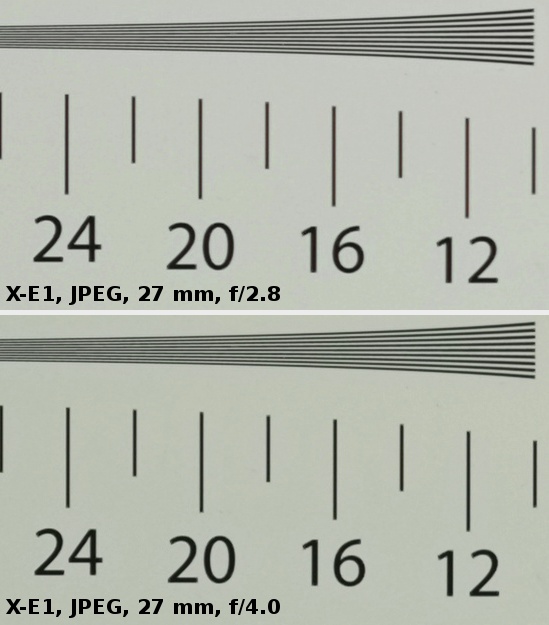Fujifilm Fujinon XF 27 mm f/2.8
4. Image resolution
The X-Trans sensor features an untypical layout of pixels, creating new challenges for demosaicing . The VNG algorithm, implemented in the earlier versions of the dcraw program and used by us so far, provided higher MTFs than the original software of the Fujifilm company but at the same time it caused distinct artifacts. From some time now the new, available algorithm, called 3-pass X-Trans, has been providing better effects. The drawing below shows you a comparison between the crops taken from the same photos developed with the old and the new version of the dcraw program.
 |
Please Support UsIf you enjoy our reviews and articles, and you want us to continue our work please, support our website by donating through PayPal. The funds are going to be used for paying our editorial team, renting servers, and equipping our testing studio; only that way we will be able to continue providing you interesting content for free. |
- - - - - - - - - - - - - - - - - - - - - - - - - - - - - - - - - - - - - - - - - - - - - - - -
As you can notice in the first photo the colourful artifacts are huge, in the second one there are almost none of them so the difference is huge. Still it would be good to ask yourself whether an algorithm which can “damp down” artifacts so efficiently limits also the resolution. That’s why we measured the resolution of the tested lens in the frame centre for RAW files developed by the old and the new algorithm. The results are presented below.

It is clear that the 3-pass algorithm is performing really well. Not only it blocks any light artifacts but also, near the peak of the lens’s possibilities, it can provide MTF values by 3-4 lpmm higher than its predecessor.Close to the f/8.0 aperture that difference reaches 2 lpmm and on more significant stopping down – less than 1 lpmm.
Taking into account its efficiency we decided that, from now on, we’d be using the new algorithm in all optics tests of the Fujifilm X system. Below we present a graph showing the resolution results in the centre and on the edge of the frame for the Fujinon XF 27 mm f/2.8, obtained with the help of Imatest with the new, upgraded dcraw version.

The results of the Fujinon 2.8/27 in the frame centre are excellent – you get a very sharp image already at the maximum relative aperture, where the MTFs reach a high level of 64 lpmm. The tested lens reaches the peak of its possibilities by f/4.0-5.6 where it basically fares as well as the fastest Fujinon 1.4/35. For a small “pancake” such a performance can be called simply brilliant.
Of course, with such small physical dimensions the compromises are unavoidable – you can notice them clearly if you examine the performance on the edge of the frame which differs a lot from that in the centre. At the maximum relative aperture the lens doesn’t provide useful images; in order to get them you have to stop it down to about f/3.5. In the range from f/5.6 to f/8.0 the image is already fully useful but far from its frame centre quality.
The crops show below were taken from JPEG files saved along with RAW files, used for the analysis above.
 |






